Center-pivot irrigation systems are a common form of irrigation in the western U.S. One challenge of managing pivots is wheel track rutting. Frustration in managing wheel ruts is often expressed by many growers – and for many good reasons.
Deep wheel tracks can cause damage to the pivot and cause overirrigation because the pivot moves slower than intended due to slippage and sticking. Additionally, other equipment that must cross the tracks, including harvest equipment, can also be damaged.
Further, and likely most damaging, is that stuck pivots can also reduce crop production and be costly.
This article provides a quick guide to five strategies for managing ruts and recent research results of how a few strategies performed in field trials in Idaho and Utah.
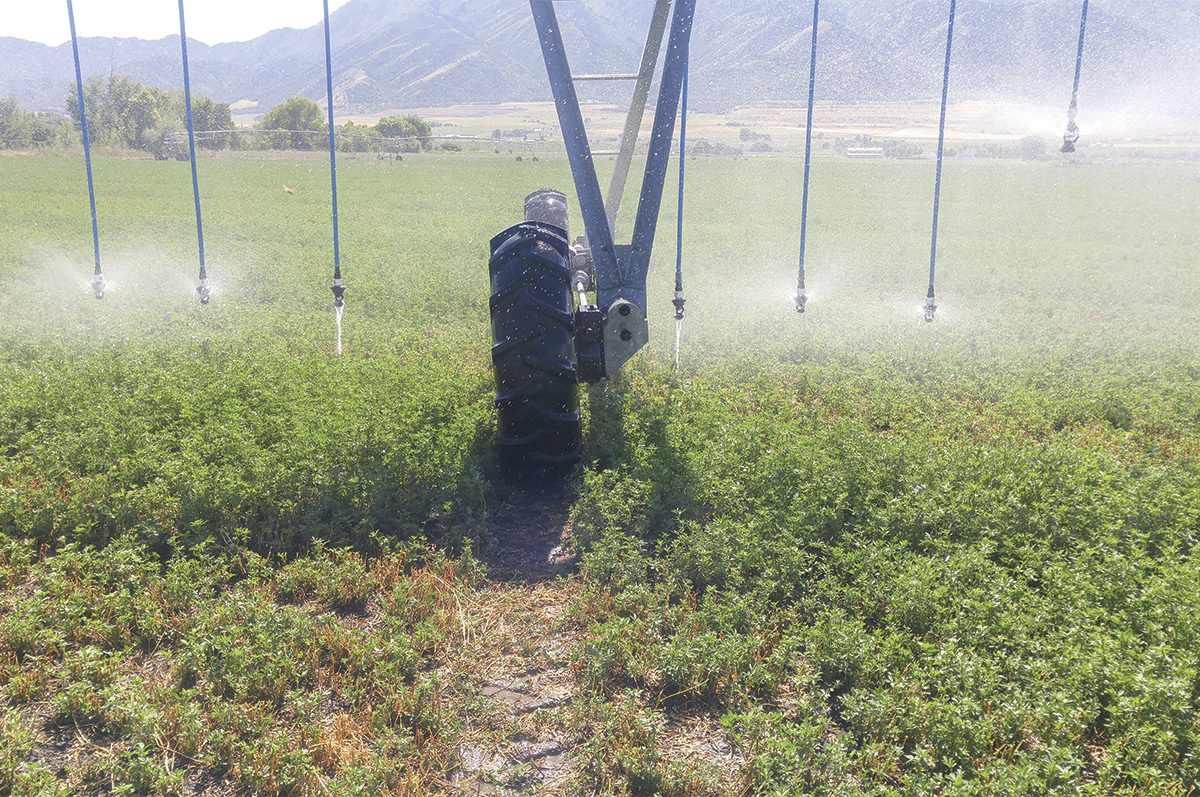
Low-elevation application sprinklers irrigate an alfalfa field in Utah. Photo provided by Matt Yost.
What are some potential solutions?
Many options are available to help reduce the impact of pivot ruts on irrigation efficiency and crop yield. Methods can generally be categorized into the following five strategies:
- Decrease the pressure on the wet soil by increasing the contact area with the soil.
- Modify soil structure.
- Keep water out of the wheel track.
- Fill the wheel tracks.
- Modify the irrigation system.
Each of these five strategies has many options. Only a few common strategies are presented here (Figure 1). It is important to note that each method has varied effectiveness in reducing wheel rut depths and comes at various prices, ranging from a few hundred dollars to over $30,000 per standard quarter-mile pivot for equipment and material costs. These equipment/material costs – along with labor and reoccurring/maintenance costs associated with each method – and the impact it has on crop production and pivot performance should all be considered when determining how to manage pivot ruts. More information about each of the options in Figure 1 is available in a new guide published by Utah State University (USU). For more exact pricing information of each option, please consult your irrigation dealer.
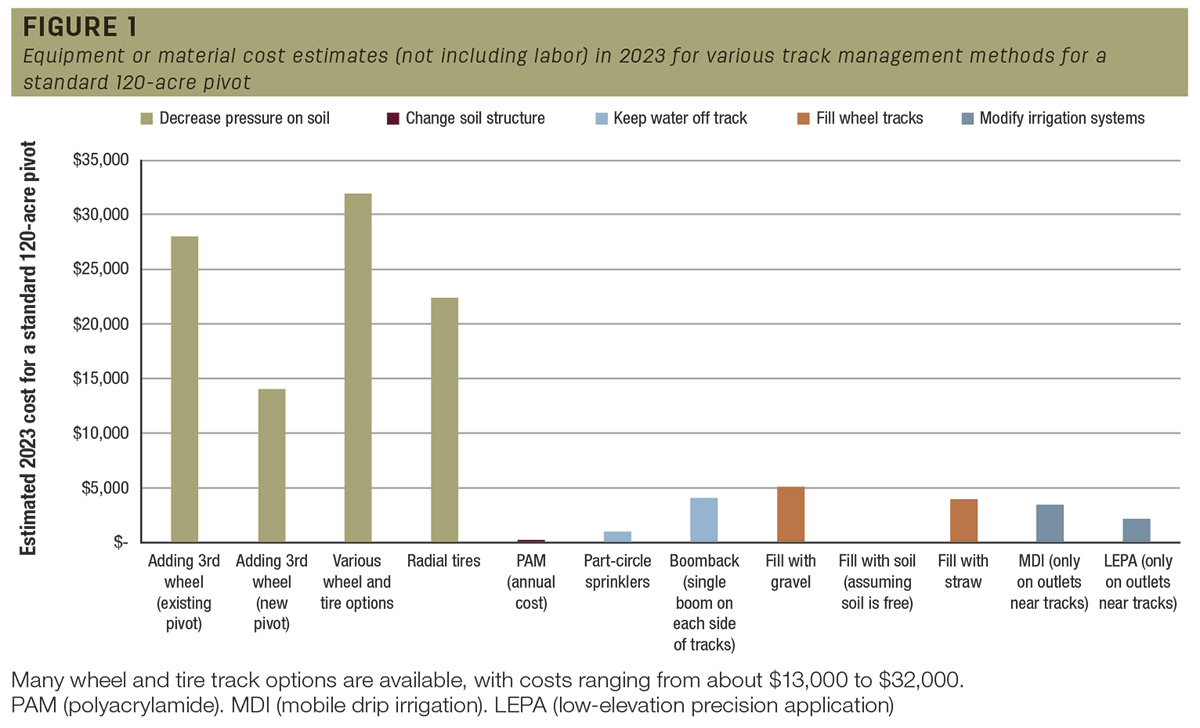
What has the research shown so far?
Despite the challenge of managing pivot ruts, little research has been published on this topic. Beginning in 2020, USU established on-farm trials in Utah and Idaho to evaluate how various strategies impact rut depth and crop performance near ruts. A total of nine trials were conducted from 2020-22 on five separate alfalfa and corn silage fields – three in Utah (Cornish, Nibley and Wellsville) and one in Idaho (Burley). The strategies varied slightly by trial based on cooperating farmer interests but mainly included keeping water off the track, changing soil structure and sprinkler modifications. On each pivot, no rut management (sprinklers irrigated over the tracks) was compared to the following treatments:
Keeping water off the track
- A single suspended boom on one side of the track
- Four suspended booms on both sides of the track
- A part-circle sprinkler on both sides of the track – attached to the sprinkler drop nearest to the track and a PVC manifold attached to the tower with two part-circle sprinklers to irrigate immediately next to the track (see Figure 2)
Changing soil structure
- Polyacrylamide (PAM) logs or sacks with powder PAM were hung from gearboxes or pivot towers and were positioned so irrigation would hit the bag and dissolve the PAM into the track.
Sprinkler modifications
- Three low-elevation precision application (LEPA) sprinklers (Senninger low-drift nozzles were used) were installed on both sides of the track.
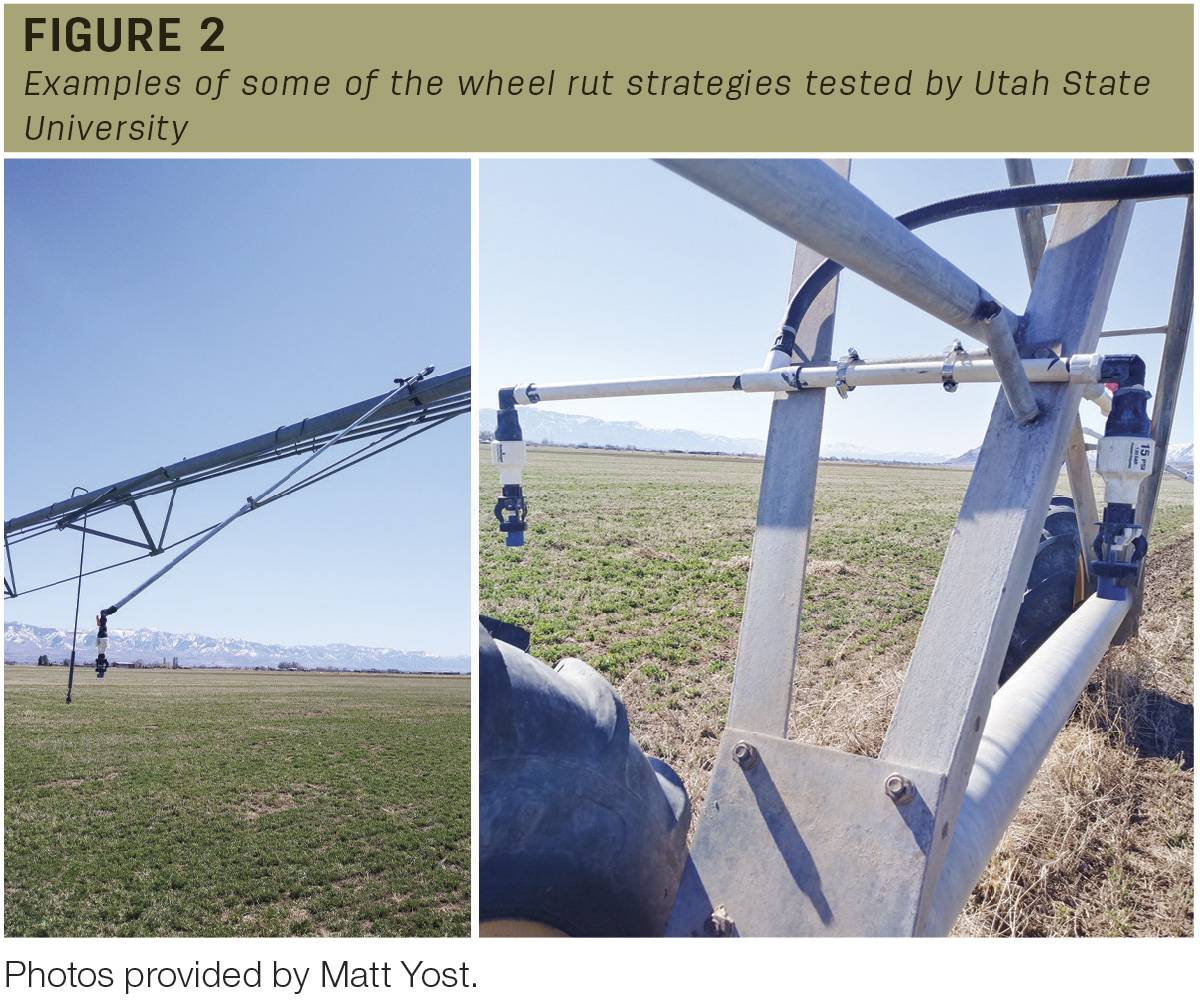
In each trial, crop yield was measured adjacent to the wheel ruts to compare how various strategies impacted crop production. Wheel rut depths were also measured at the end of each season. Trials were repeated in the same fields for two years where possible.
Impact on crop yield near tracks
The goal of studying these wheel track modifications was to determine whether yield could be maintained (or possibly increased) while simultaneously reducing wheel rut depths. The control treatment was no modification and usually included a midelevation sprinkler that sprayed over the tracks. This was compared to the four modifications that aimed to reduce irrigation applied to the track or to stabilize the soil.
Silage corn yield was measured in two fields near Burley, Idaho, in 2021 and 2022 for a total of four trials. Silage corn yields ranged from 16 to 39 tons per acre (at 65.5% moisture) across years and treatments. The track modifications rarely increased yield in these four trials. There was a large (31%) increase in silage yield with LEPA compared to the control in one field in 2021 (Figure 3). However, the yield increase was not sustained in the second year. Likewise, the single-boom method increased yield by 20% in the other cornfield in the first year but not in the second year. The part circle never increased yield and decreased yield in two of four years. This was due to the inability of the part circle sprinklers to adequately spray through the crop canopy later in the season. The PAM method should not have affected crop yields compared to the control, but in one of the four trials, yield was less with PAM, likely due to variation in performance from track to track on the pivot.
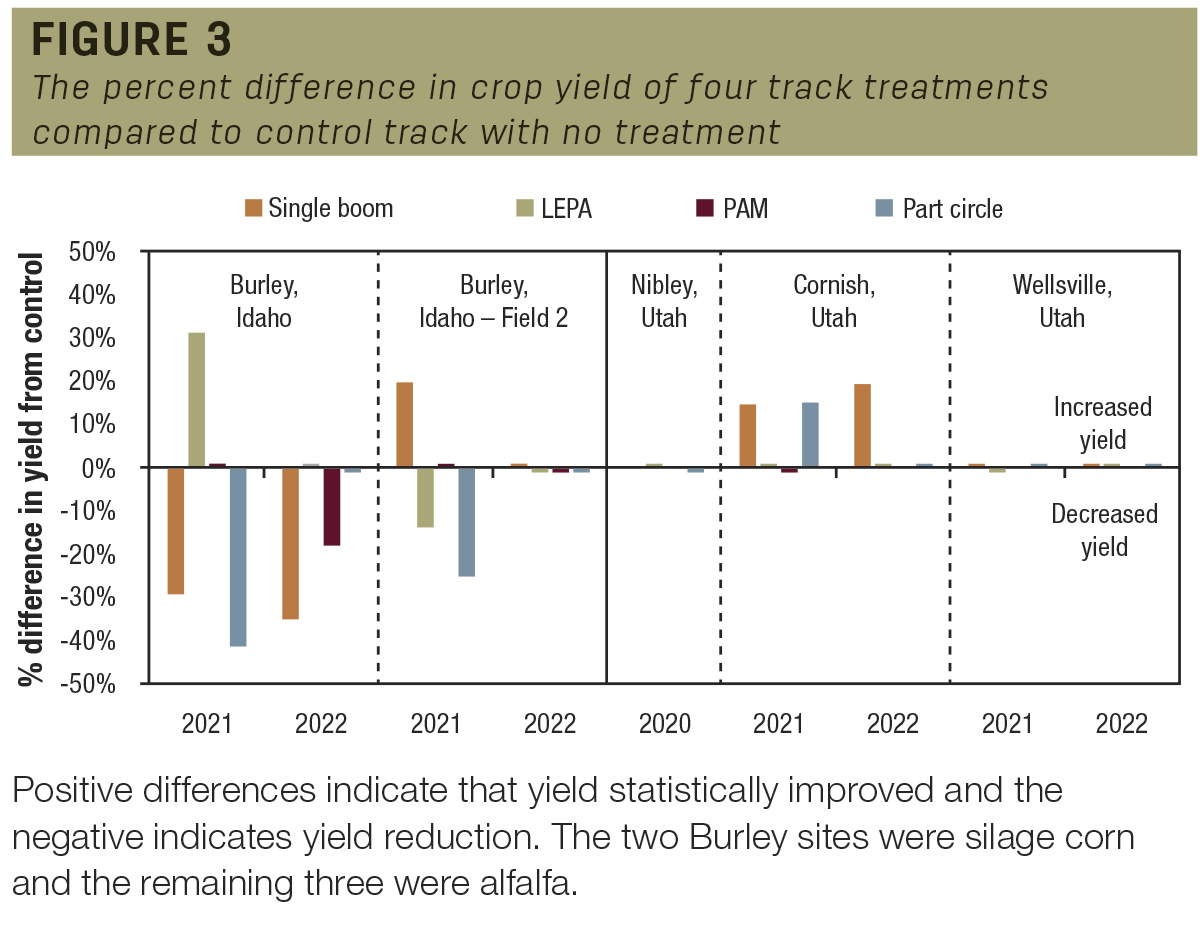
Alfalfa yield was measured at three sites in Utah during 2020-21 for a total of five trials. Alfalfa yield ranged from 1.2 to 5.4 tons per acre (at 13% moisture) across the trials and treatments. Alfalfa was cut one to three times each year depending on water availability and yields were often lower than usual due to water restrictions caused by the extreme drought conditions. Alfalfa yield was rarely impacted by the track modifications across the five trials (Figure 3). The single boomback increased alfalfa yield by 15%-19% in both years at the trial in Cornish. It did not impact yield at the Wellsville trial in either year. In the first year of the Cornish trial, the part-circle sprinkler also increased yield by 15% compared to the control, but this benefit was not sustained in the second year of the trial. No treatments caused reductions in alfalfa yield.
Impact on wheel track depth
As discussed above, the track modifications often did not impact crop yield. They did, however, often influence the depth of the wheel ruts. The two methods that most frequently decreased the depth of the wheel rut (i.e., shallower ruts) were the part-circle sprinklers and LEPA. Part-circle sprinklers significantly decreased ruts in three of the nine trials and LEPA decreased rut depth in two trials. Despite the benefit of part circles in decreasing wheel ruts, it also decreased yield in two of the three cases where it also reduced wheel ruts. This was not the case with LEPA, where yield was maintained at the two trials where rut depth decreased. This suggests that LEPA may have a greater ability to reduce ruts and maintain (and sometimes increase yield) compared to the control and the other track-management methods evaluated. This was especially apparent for silage corn, where part circles sometimes had difficulty applying irrigation through tall canopies. Surprisingly, the single boomback only decreased rut depth in one trial, and the PAM never decreased rut depth.
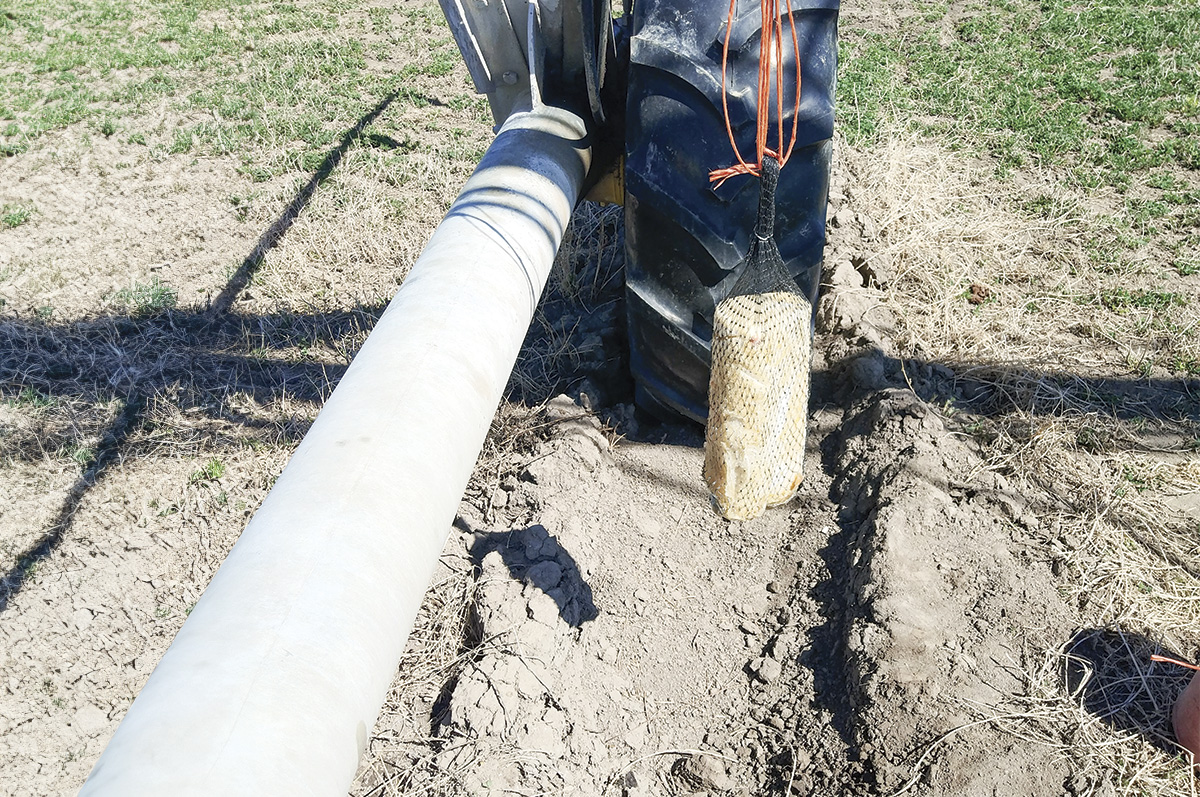
Polyacrylamide (PAM) logs were positioned so irrigation would hit the bag and dissolve the PAM into the track. Photo provided by Matt Yost.
Summary
There are many ways to manage wheel ruts. They can be grouped into five general approaches. Few of these have been evaluated in replicated research trials, so irrigators should use caution and do their own on-farm tests to evaluate several options before making large investments. The four strategies tested in a USU study (boomback, LEPA, PAM and part circle) had varied impacts on crop yield and wheel track depth. The single boom was effective at maintaining yield, but some sites had reduced yield and unaffected or deeper wheel tracks. The PAM method had little effect on yield, forage quality or wheel track depth. The part-circle method improved wheel tracks but lowered crop yield. The LEPA method was the most consistently effective method for maintaining crop yield and quality while improving wheel tracks. Additional research on these and other methods is needed, but the results so far suggest that some simple sprinkler modifications can have a positive impact on yield and wheel rut depths.
Jonno Holt contributed to this article and is a past graduate student at Utah State University.
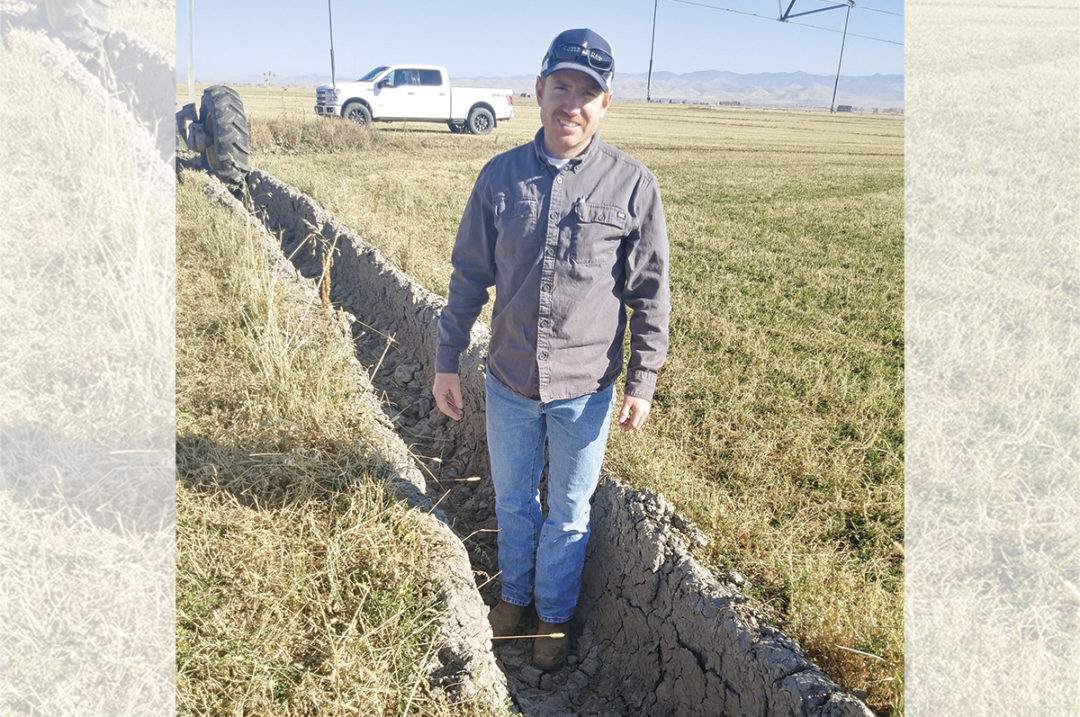




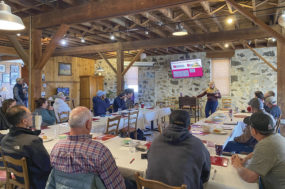

.jpg?height=auto&t=1713198780&width=285)
